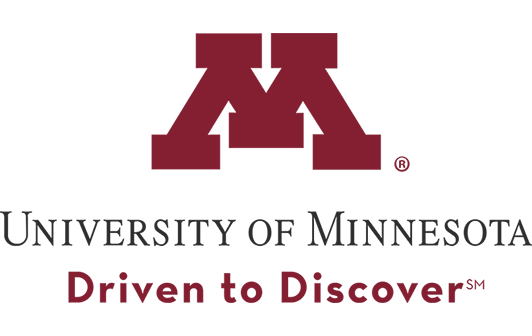The Case Management Challenge
“Customer care is a top priority for UMN, but its centralized service hub, One Stop Student Services, faced a challenge when it came to decision making and case management. It lacked a comprehensive system for record-keeping, documenting interactions, and tracking outcomes. One Stop struggled to fully understand its students’ needs and make the most effective use of its resources.
“Our main challenge was that we couldn’t identify the students we were helping, when we were helping them, and why,” said Carrie Otto, Associate Director, Enterprise Constituent Relationship Management at UMN.
UMN and One Stop needed better visibility into its student data and a CRM solution that could give them the connectivity and functionality they needed to improve case management and optimize operations.”
-
1,000+Salesforce users across campus
-
50%of incoming requests were general information discovered by One Stop
-
4,000students served by Live Chat solution within 3 months
The Path to Better Decision Making
“Turning to Salesforce.org Education Cloud, UMN and One Stop found an agile and scalable platform that could consolidate their student information and provide a 360-degree view of their constituents, as well as insights into their internal practices and operations.
“We were looking for greater transparency and wanted to be able to make better data-informed decisions in our business models and how we work with students,” said Otto.
With Salesforce, UMN connected several disparate systems and combined student data from various colleges and business units, including student services and academic advising. The platform eliminated silos that had restricted data sharing and made it possible to access and analyze student information on demand.
UMN created transferable templates to easily scale use cases across departments, and now has nearly 1,000 users across campus. They launched several additional Salesforce solutions, including Marketing Cloud as its enterprise communication tool — which has nearly 600 users — as well as Account Engagement and Social Studio. For several offices, including One Stop, Tableau has also become an invaluable resource for analyzing student data and outcomes.
“Salesforce has allowed us much more transparency into what’s happening in our work with students and other constituents. It gives us better access to serving our populations with a broader range of tools that are readily available to different groups.” Carrie Otto, Associate Director, Enterprise Constituent Relationship ManagementUniversity of Minnesota
Driving Operational Efficiencies with Data
With greater connectivity and easier access to UMN’s student data, One Stop obtained a clear and easy-to-understand picture of their customers’ needs across the student lifecycle, from new student orientation to post-collegiate outcomes. One Stop also gained insights and new perspectives into how they manage cases and deliver services, and were able to move quickly to optimize and improve the way they worked.
“We’re much more efficient now,” said Otto. “The customer service staff used to have to navigate between eight or more different systems; now there are only three and it makes their jobs easier and more effective.”
After a few months of tracking student interactions, One Stop discovered that nearly 50% of incoming requests were for general information. This prompted a transition to a tiered staffing model that saved resources by reallocating senior personnel to higher-value tasks. In another instance, One Stop eliminated thousands of time-consuming phone and email inquiries by analyzing constituent interaction data and adjusting communications related to technical business processes.
“Within just a few months, we had tremendous data that allowed us to make some really key decisions in our staffing model and pretty significant business process changes to gain new efficiencies in our operations,” said Otto.
Making the Service Connection
In terms of customer service and meeting students’ needs, fewer silos and more centrally managed data means One Stop staff can now access and share information much more fluidly, which has enhanced communications and the overall level of care.
Increased visibility and transparency has resulted in much more consistent service and a more holistic approach to case management and advising. One Stop is able to proactively identify students who need help, address their concerns or make referrals, and be ready to add additional service capabilities when required.
With Salesforce data in hand, One Stop launched a campaign to target and support new undergraduate students who have financial needs. They identified 1,100 first year students who were at financial risk and successfully intervened to make sure the learners received assistance and successfully enrolled for their sophomore year.
At the outset of the COVID-19 pandemic, One Stop launched Salesforce’s Live Chat solution to make a rapid pivot to virtual service. They served more than 4,000 students within the first three months, and with trackable metrics, they were able to adjust their operations to make Live Chat a permanent fixture, as well as develop a template to implement the tool within several other business units.
Salesforce has also assisted UMN in developing meaningful metrics surrounding actual student outcomes and has enabled the university to accurately measure the effectiveness of its student services and support.
“We have started to find some correlational data that relates the amount of times students are using One Stop Student Services to higher average GPA’s,” said Otto. “CRM technology has allowed us much more transparency into what’s happening in our work with students and other constituents. It gives us better access to serving our populations with a broader range of tools that are readily available to different groups.”
“We were looking for greater transparency and wanted to be able to make better data-informed decisions in our business models and how we work with students,” said Otto.
With Salesforce, UMN connected several disparate systems and combined student data from various colleges and business units, including student services and academic advising. The platform eliminated silos that had restricted data sharing and made it possible to access and analyze student information on demand.
UMN created transferable templates to easily scale use cases across departments, and now has nearly 1,000 users across campus. They launched several additional Salesforce solutions, including Marketing Cloud as its enterprise communication tool — which has nearly 600 users — as well as Account Engagement and Social Studio. For several offices, including One Stop, Tableau has also become an invaluable resource for analyzing student data and outcomes.
Explore the Solutions:
Sales Cloud
Service Cloud
Marketing Cloud
Future Strategy
“The next steps in UMN’s journey include utilizing more sophisticated analytics, creating its first Community for Orientation and Transition Experience, kicking off a large-scale career services project, and developing a strategic road map that will solidify UMN’s broader institutional value picture.
“We are on an exciting journey to paint a picture of how students are interacting and engaging with our university from the point of matriculating all the way through to graduation,” said Otto.”
Accelerate Your Digital Transformation

About University of Minnesota
Home to more than 67,000 students, the University of Minnesota (UMN) is among the ten largest universities in the United States and one of the highest-ranked research institutions.

